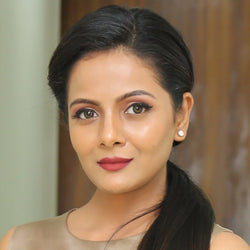Clinical Studies: Phototherapy and Genital Herpes
The information provided is for educational purposes only and is not intended to support the safety or effectiveness of Luminance Medical’s devices, or diagnose, treat, cure, or prevent any disease. It's not a substitute for a consultation with your healthcare provider and should not be construed as medical advice. The clinical studies presented below were conducted with devices that deliver the same or similar light wavelengths and irradiance as the Luminance RED.
A Better Option for Genital Herpes (HSV-2)
Genital herpes outbreaks caused by HSV-2 can be painful and limit quality of life. But common treatments and home remedies usually provide only temporary relief or unreliable results. Peer-reviewed clinical research is showing how light treatments can be a more effective solution that both limits pain and the overall viral load of HSV-2.
Clinical Research Shows Light Treatments Improved Genital Herpes Outbreaks
Numerous clinical studies over the last decade have shown light treatments to be safe and effective for the treatment of various skin conditions. [1] In a pivotal study on light and genital herpes, researchers analyzed women with HSV-2 who used phototherapy for three weeks. The clinical team measured pain levels among the participants before, during, and after the course of treatment, and also used blood tests to analyze the viral load from HSV-2 that was present in the bloodstream. The results show that light treatments can make a major difference for a person experiencing a genital herpes outbreak. [2]

Less Pain from Genital Herpes after Phototherapy
The most notable result from the study was a major reduction in the pain experienced by the patients after using light treatments for genital herpes. Across all participants, pain was reduced by an average of 82% with phototherapy.[2]
Light Treatments Significantly Reduced the Viral Load from HSV-2, Potentially Preventing Future Outbreaks
In addition to assessing pain from genital herpes, researchers also conducted blood testing assays to determine the viral load from HSV-2 present in the patients’ bloodstreams. After three weeks of daily phototherapy, the results were “highly significant,” showing a major 60% and 56% reduction in viral load of immunoglobulin G (IgG) and immunoglobulin M (IgM). [2]
This result demonstrates that light treatments can not only improve pain and quality of life for people with genital herpes, but also may lessen the overall severity and viral potency of outbreaks. This is a good indication that effective light treatments may actually prevent future outbreaks or lessen their frequency and severity.
Phototherapy was More Effective than Other Treatments
The study also compared light treatments to topical treatments with honey and ultrasound, a method used around the world to treat HSV-2 and other skin conditions. The researchers showed that light treatments were the most effective method of reducing genital pain and viral load. [2]
How Do Light Treatments Work?
In general, light treatments work by stimulating your cells to make more energy and heal more efficiently. [3] Light treatments have also been proven to lessen pain and inflammation for various skin conditions by enhancing blood flow to damaged tissues. Phototherapy has also been found in numerous clinical trials to increase the body’s antioxidant defenses as well. [4]
Light Treatments are Safe and Effective, with Minimal Side Effects or Risks
Light treatments have repeatedly been found to be a safe and well-tolerated treatment modality for patients. A 2013 review of existing clinical research on light treatments and skin praised its “noninvasive nature and almost complete absence of side effects.” [5]
Sources and References:
[1] Avci P, Gupta A, Sadasivam M, et al. Low-level laser (light) therapy (LLLT) in skin: stimulating, healing, restoring. Semin Cutan Med Surg. 2013;32(1):41-52.
[2] Waked, Deghidi, and Shalaan. HONEY PHONOPHORESIS VERSUS LOW INTENSITY LASER THERAPY IN FEMALE GENITAL HERPES. IJCRR, Vol. 6, Issue 10. May 2014.
[3] Hamblin M. “Mechanisms and Mitochondrial Redox Signaling in Photobiomodulation” Photochemistry and Photobiology.2018, 94:199-212. 2017 October 31. doi: 10.1111/php.12864
[4] Hamblin M. “Mechanisms and applications of the anti-inflammatory effects of photobiomodulation”. AIMS Biophys. 2017; 4(3): 337–361. doi: 10.3934/biophy.2017.3.337
[5] Avci P, Gupta A, Sadasivam M, Vecchio D, Pam Z, Pam N, Hamblin MR. Low-level laser (light) therapy (LLLT) in skin: stimulating, healing, restoring. Semin Cutan Med Surg. 2013 Mar;32(1):41-52. PMID: 24049929; PMCID: PMC4126803.


















